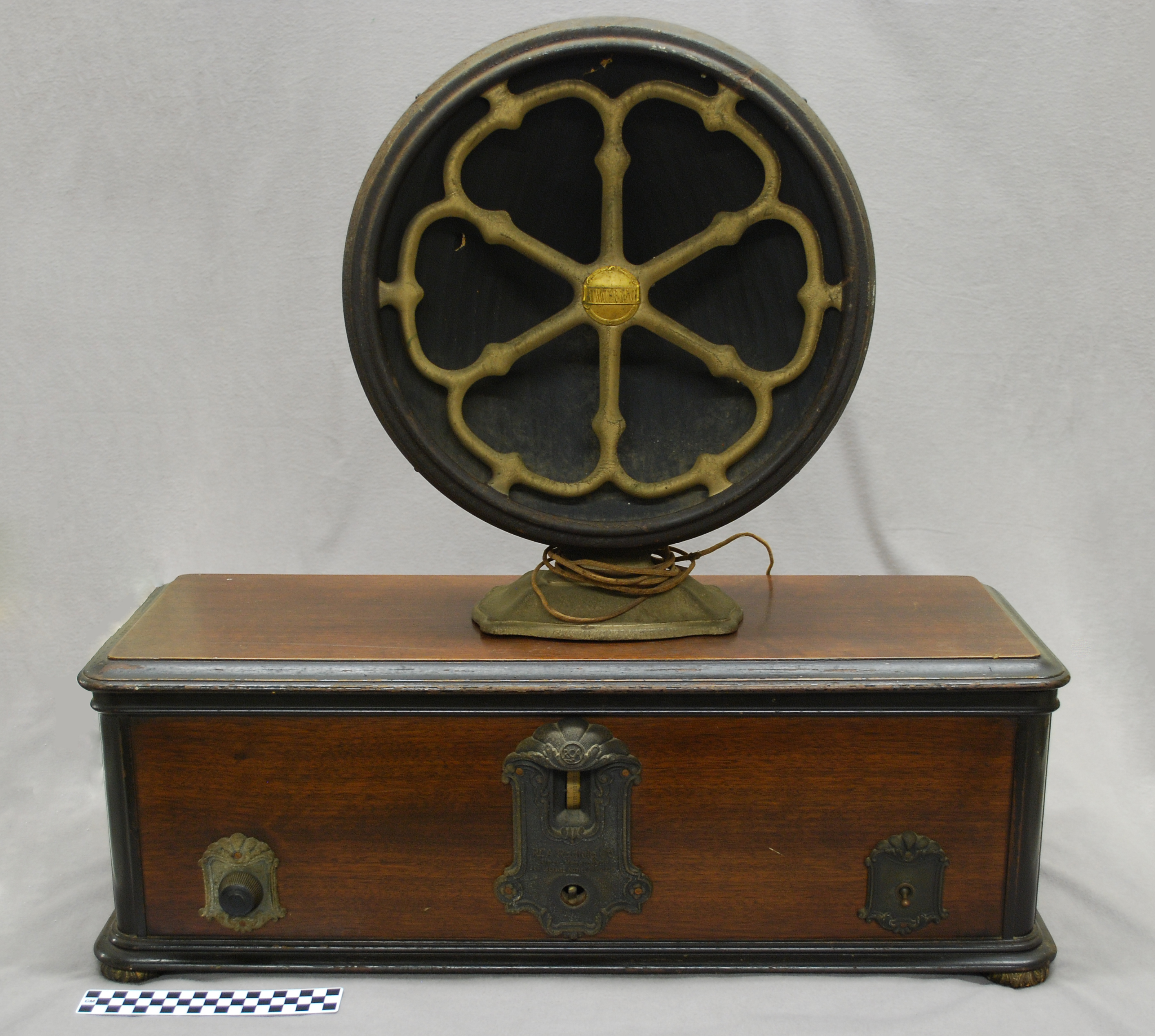This object is an RCA radio with an Atwater Kent speaker that attaches to the radio. There are a couple of different people credited as pioneers of the radio and include Henrich Hertz, Nikola Tesla, and Guglielmo Marconi, to list a few. As technology has evolved so has the appearance and use of the radio. This particular style of radio would have been primarily used within the home. It would have been a one way transmission which means that the radio would receive a signal from the nearest broadcasting tower, but would not be able to send a signal back.
The first major wireless communications were from ships at sea to other ships or land-based stations. However, since voice transmission was not yet available these messages would be sent by coded dots and dashes also known as Morse Code. Morse Code worked by assigning letters and numbers a set of dots and dashes. Letters used often would get a simple code, while letters less used would get a more complex code. As radio correspondence between ships became more available, questions regarding correspondence were raised. A major debate at the time was the number of operators working on these ships, and after the sinking of the Titanic, the Radio Act of 1912 was passed. This act made sure that all radio operators on the ships would have licenses to operate the radios and that radios would be under constant watch 24 hours a day.
Once the long distance transmission of a human voice and music was made possible, radios started to be used as a form of entertainment. The period between the 1920s and 1930s is considered the golden age of radio. It was during this time the radio broadcast of comedies, dramas, variety shows, and popular music gathered millions of listeners. The large audience resulted from radios being made smaller and less expensive. Having a radio in the living room was as common as having a television today. Listening to the radio brought communities together and the audience also related to the heroes in the programs they listened to. Besides entertainment, the radio was used to listen to the news. One example of this was the Hindenburg disaster which was covered by radio reporter Herb Morrison. The radio was also used to listen to Franklin Roosevelt’s fireside chats, a series of presidential speeches aired on the radio. These speeches made the public feel closer to the President in a whole new way.
One popular company who produced radios was the Radio Corporation of America (RCA) which was formed in 1919 and the brand of the radio shown here. A. Atwater Kent the man who the speaker is named after, was an inventor and owner of the largest radio factory in Pennsylvania. The Atwater Kent Company produced a number of different models of radios and at one point was the world leader in radios. Kent spent more than $500,000 on advertising for his radios, at the time a huge sum, and he even had his own radio show called The Atwater Kent Hour, which was one of the most popular shows on the radio.
As television became more popular many of the shows that people listened to on the radio moved to the television screen. However, radio has not been completely taken over by television and it is estimated that 95% of Americans listen to the radio at least once a week. As radio platforms continue to change one thing is for sure, the radio has come a long way.
